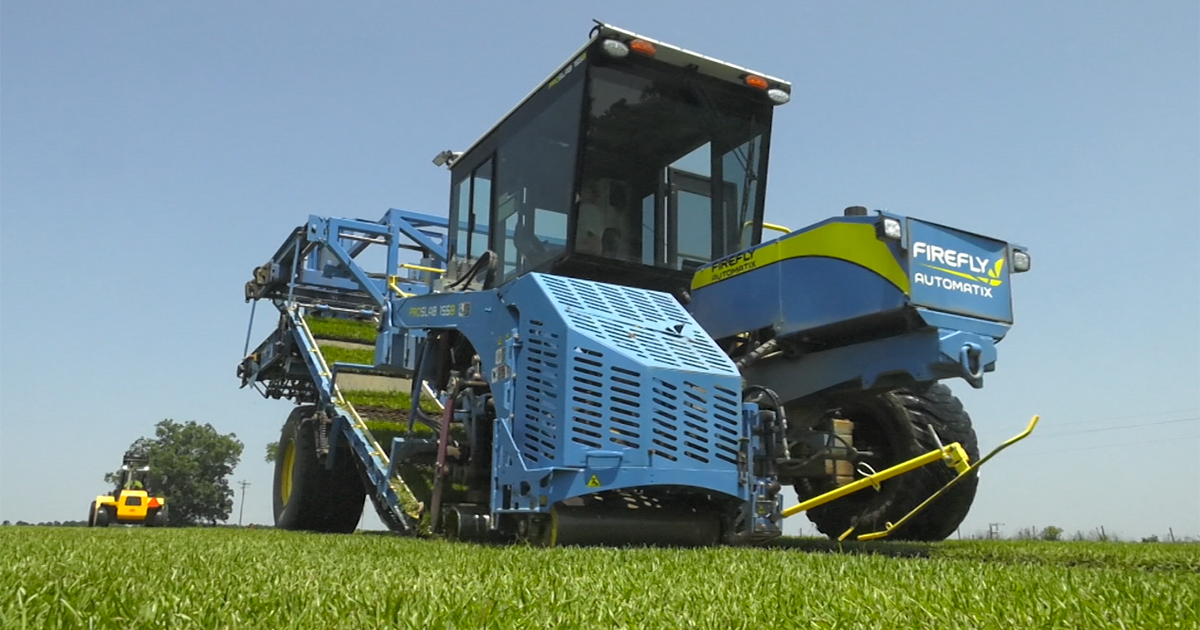Abbeville, GA
Here in South Georgia, this turfgrass operation is hard at work harvesting some fresh sod that will most likely make its way to Atlanta and transform someone’s yard. This of course is nothing new for them as it’s something they’ve been doing for more than two decades since getting their start in the industry.
“Majority of what we grow goes to metro-Atlanta area. So, if Atlanta sneezes, I guess we catch a cold. So, we keep up with what is happening in the Atlanta market. A lot of great customers, but it’s taken us about twenty-three years to get the great group of customers that we have right now. We got some regular customers and then others that just call in, maybe homeowners or contractors that are interested in our products; in our Bermudas and our zoysias,” says Chris McIntyre, Vice President of McIntyre Turf.
Over the years, they’ve worked hard to expand their customer base and to expand their operation by adding new production acres, crew members, equipment, and new varieties of grass.
“We’ve grown from starting out with one small field of twenty-five acres, one pivot and kind of added on each year. Tried to add a pivot and twenty-five, thirty acres. We started with a small crew with a manual sod harvester, now we have two automated sod harvesters, much larger crew, trucking has improved greatly, we’ve got a nice fleet of trucks that haul our sod regularly,” says Burt Bynum, Owner of McIntyre Turf.
“Well of course we’ve grown our acreage and then we’ve gone through and a lot of customers that we’ve added, trying to get a good fit you know, we have to work well with our customers and they have to work well with us and we have to know what their business is, and so we feel like we’ve been successful there and that has taken a good twenty three years to do,” says McIntyre.
However, a growing operation also means more opportunity for challenges, like with costs of inputs such as fuel and fertilizer, but they say the main challenge is mother nature, as this Spring was unusually cold and caused their grass to nearly stop growing.
“This past year, we had a good growing season. As winter came in, everything was good, started warming up early, our grass started growing and then it got cool in March and April and even in May, really cooled off for us, so it almost kind of put a halt to our growing, trying to grow our sod back to where we could harvest it,” says Bynum.
According to Chris, there’s one more challenge, and that’s their water, as they can’t grow grass without it , which is why they rely heavily on irrigation systems and say they couldn’t operate without them.
“The things we can’t control really are the water and temperature. Both of those are important for growing grasses. Particularly our warm season grasses and then if we didn’t have these irrigation systems and a good water source, we have ground water and surface water that we are able to draw from, but we couldn’t do what we do without this irrigation. Anytime we do add new acreage, it’s a must. It’s got to have a way to put water on it,” says McIntyre.
By: John Holcomb

